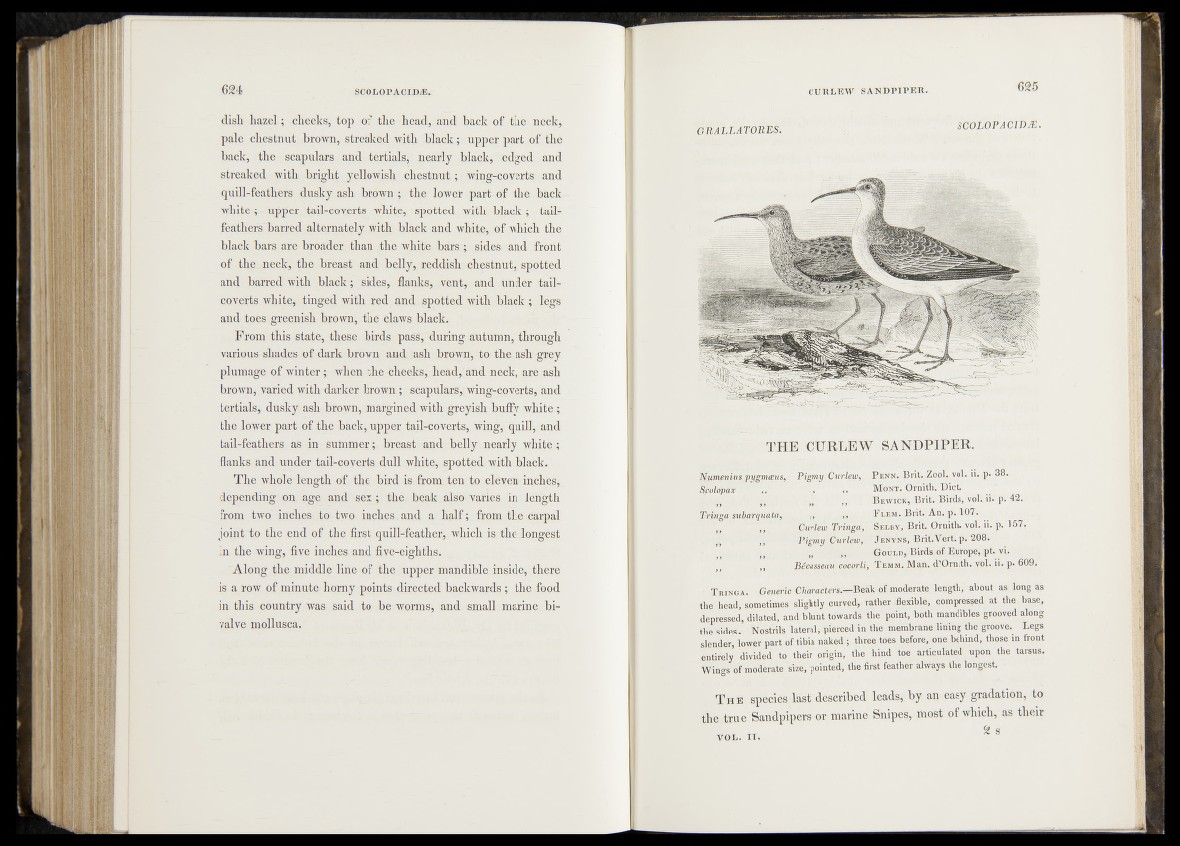
dish hazel; cheeks, top of the head, and back of the neck,
pale chestnut brown, streaked with black; upper part of the
back, the scapulars and tertials, nearly black, edged and
streaked with bright yellowish, chestnut; wing-coverts and
quill-feathers dusky ash brown ; the lower part of the back
white-; upper, “tail-coverts white, spotted with; black ; tail-
feathers barred alternately with black and white, of which the
black bars are broader than the white bars,; sides and front
of the neck, the breast and belly, reddish chestnut,, spotted
and barred with black; sides, flanks, vent, and under tail-
coverts white, tinged with red and spotted with black ; legs
and toes greenish brown, ,the claws black.
From this state,, these birds pass, during autumn, through
various shades of dark brown andjash brown:, to the ash grey
plumage of winter; when the cheeks,..head, and neck, are ash
brown, varied with darker brown; scapulars, wing-coverts, and
tertials, dusky ash brown, margined with greyish bufiy white.;
the lower part of the back, upper tail-coverts, wing, quill, and
tail-feathers as in summer; breast and-beljy nearly white;
flanks and under tail-coverts dull white, spotted, with black.
The whole length of the bird is from, ten;to eleven inchqsj_
depending on .age and sex; the beak also varies in length
from two inches to two inches. and a ^ l f ; from ; the carpal
joint to the end of the first quill-feather, , which is the .longest
in the wing, five inches and five-eighths.
Along the middle line of the ,upper mandible inside, there
is a row of minute homy points directed backwards; the food
in this country was said to be worms, and small marine: bivalve
mollusca.
T H E CU R L EW SA N D P IP E R .
NumniuspygmceiLS, ^Pigmy Curlew,^ P enn. B r i t . , k \ ’ -j
S&olopax ,,‘ „ „ 4 Mon/. GmltB. Diet.
Z U ,, ,, ,, : BeWïgü, .Brit. Birds, vfiliii. p. 42.
fcringa subarquata, ,, Flem. Brit. An. J».
':)f ‘ ‘ Curlew fringaSelby, Brit.'Ornith.Wcl. ii. p. 157,
. » ,, Pigmy Curlew^ ■‘•’'JIenyns, -Brit.Vert. p. 208.
*»■ J Hi Gould,'Birds of Europe, pt. vii
„ Bécasseau cocorli, Temm. Man. d’Ornith. yol. ii. p. 609.
• Tring a; Generic Characters.—Beak of moderate ' length, abôut as long as
the head, sometimes slightly curved, rather .flexible, compresged at the base,
É ^ s s e ^ C dilated, and bt^rt towards the^point, bSth mandibles grooved along
thehtides. Nostrils lateral,-pierced in the membrane lining the‘groove, tegs
slender, lower part of tibia naked ; three toes before, one behind, those in front
entirely divided tq their origin,' thV hind toe" articulated upon the tarsus.
Wings of m oderate's^ pointed, the first feather always the longest. *
T he species-last described'leads,:by an easy gradation, to
the true Sandpipers or marine Snipes, rtiost of which, as their
von. it. a s